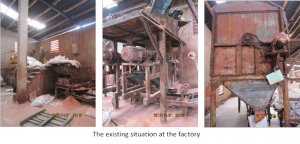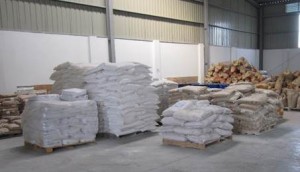Tien Nong., JSC – a good start for RP
Tien Nong fertilizer factory – the first name of Tien Nong Industrial & Agricultural Joint Stock Company (Tien Nong JSC.) was established in January 4th, 1995. From the small factory with unique fused phosphate, Tien Nong JSC. now consists of three factories with the capacity of 150,000 tons per year to produce many types of fertilizers used for plants and soil. Tien Nong has invested to build a large scale fertilizer production industrial complex with 21.5 ha in area at Bim son – Thanh Hoa Industrial Park with the capacity of 350.000 tons per year. The RP project was applied at the Factory No. 3 where they have approximately 180 employees.
VNCPC’s experts and RP team had followed the suggested RP tools as provided in the RP toolkit CD. The main hotspots were for Ammonium Sulphate, Ammonium Chlorite, Urea and other fertilizers (as raw materials) at storage and production areas.
RP was first introduced to General Director of the company, then he encouraged to apply RP as demonstration project at Factory No. 3. Because RP methodology was new to management board, staff and workers, and chemical management was a sensitive matter to them, the VNCPC’s expert team used an indirect approach instead of direct one: (1) carrying out other RP-related aspect assessment (material, water, and energy assessment), then (2) training for key members of RP team, (3) integrating and applying RP tools during assessment of RP-related aspects and finally, (4) training for more participants from company based on their demand.
 With the characteristics of fertilizer production in which Ammonium-contained materials are used at huge amount and producing within an open environment (materials processing on rotary trays, open conveyers, etc.), the NH3 generated from decomposing of those materials becomes the most dangerous threat for workers, equipment and even material loss.
With the characteristics of fertilizer production in which Ammonium-contained materials are used at huge amount and producing within an open environment (materials processing on rotary trays, open conveyers, etc.), the NH3 generated from decomposing of those materials becomes the most dangerous threat for workers, equipment and even material loss.

 Thanks to the application of RP approach and methodology, and RP tools, the company was able to build the inventory for using chemicals, raise awareness in chemical management, and implement some proposed RP and RP-related options. The project will be continued at the Factory No.3 and will be replicated at other ones, especially at the under-construction one.
Thanks to the application of RP approach and methodology, and RP tools, the company was able to build the inventory for using chemicals, raise awareness in chemical management, and implement some proposed RP and RP-related options. The project will be continued at the Factory No.3 and will be replicated at other ones, especially at the under-construction one.




